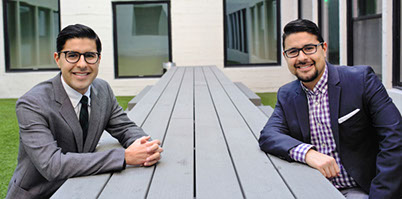
Blow Open the Horizons
In every corner of America, the plight of English Language Learners is the subject of considerable debate. As the grandson of Spanish-speaking immigrants, it’s a topic that’s near to my heart — and it gets at the heart of the opportunity gap in U.S. schools.
While the overall high school graduation rate in this country has reached a record 83 percent, ELLs fall short of that benchmark by a full 20 points, at just 62.6 percent. In fact, of all the major student subgroups (Hispanic, black, low-income, students with disabilities), ELLs rank dead last on graduation rates.
benchmark by a full 20 points, at just 62.6 percent. In fact, of all the major student subgroups (Hispanic, black, low-income, students with disabilities), ELLs rank dead last on graduation rates.
This isn’t an abstract problem for me. I used to be the state superintendent of public education in Nevada, where less than one-third of ELL students achieved on time graduation. Read that number again: Less than 33 percent of students who are learning English will manage to earn a Nevada public high school diploma on time. At any individual level, that’s a tragedy for each student. At the macro level, it’s a huge challenge for the state’s economy, which is undergoing tremendous diversification and will be even more on students graduating from high school and taking a productive role in the workforce.
I recently left Nevada state government to assume the role of president and CEO at Communities In Schools (CIS), the nation’s largest and most effective dropout prevention network. We serve 1.5 million kids in 26 states by providing “wraparound services” that help them stay on track for graduation—things like nutrition, housing, transportation, counseling and mental health services.
About 43 percent of our students are Latino, and many of those are native Spanish speakers. For these kids, wraparound services offered in the school setting can make all the difference, because their parents so often lack the language skills (or in some cases the documentation) to access social services offered by government agencies.
CIS puts a caring adult inside the school to ask questions, watch for warning signs and build relationships. When we spot students sliding off course, we get to know their families and their struggles, and then we match them up with exactly the services they need to stay in school.
The results of this approach are amazing: Even though CIS works with some of the most disadvantaged subgroups in America’s public schools, 99 percent of our students are promoted to the next grade, and 93 percent graduate.
When resources are scarce, it’s often tough to get sufficient funding for ELL programs, specifically. But wraparound services can garner widespread support because they are available to all students in need. Wraparound services may be a practical way of getting ELLs the kind of targeted, personalized support they need, without creating any sort of backlash or competition for targeted funding.
Under the new federal education law known as ESSA (the Every Student Succeeds Act), low-performing schools may use federal dollars for wraparound services—but they may also use that money for lots of other improvement strategies, such as computer labs or advanced placement courses. Those strategies are fine, but they are not especially helpful for English language learners. That’s why I encourage readers to reach out to state and local education leaders right now and urge them to adopt wraparound services as their school improvement strategy for the 2017-2018 school year. Plans are being developed now, so there is a genuine urgency.
Why does it matter? Let me give just one example, someone I know from the CIS network.
Growing up in a Spanish-speaking household, Rey Saldana couldn’t imagine a life beyond his gritty, working-class neighborhood. “A mechanic, a hospitality worker, a waitress at the restaurant down the street—those were the expectations of success,” he recalls.
Rey entered high school with about 500 students in his class, but only 304 made it to graduation. He might have been among the 40 percent who “lost their way,” except that he discovered CIS in his sophomore year. With the counseling and support he received from his CIS site coordinators, Rey not only stuck it out, but he began to imagine a bigger future.
On a CIS college visit, Rey left his neighborhood for the first time and spent his first night away from home. That experience “blew open my horizons,” he says, allowing him to dream of something beyond the local community college. With the help of his site coordinators, Rey started applying to some of the most selective universities in America—places where no one from his neighborhood had ever been.
Within just a few years, Rey had earned three degrees from Stanford University. After graduation, instead of a lucrative business career, he went back home to represent his old neighborhood on the San Antonio City Council, where he is an outspoken champion of education and community development. In his spare time, he heads up a national network of CIS alumni, because he believes that he’s “one of the lucky ones” whose life was changed by wraparound services.
Rey’s story is inspiring, but it’s not unique. In Washington, DC, for instance, CIS of the Nation’s Capital is active at the DCPS International Academy, a unique program for newly arrived students. Just last month, CIS arranged a college visit to Marymount University, where students from the International Academy could meet with other Latino students who are the first in their family to attend college.
Will that visit “blow open the horizons” for another student like Rey? I have no doubt the answer is “Si!”
Dale Erquiaga is the President and CEO of Communities in Schools.
Lending to Latino Businesses
I remember the first time I spoke to Jorge – he sounded frustrated. We spoke in Spanish and together we slowly began to unravel the capital bind Jorge found himself in. Jorge had taken a loan from a predatory lender a year prior to our call in the spirit of growing his fruit wholesale business, El Duranguito. It became instantly clear this loan was doing more harm than good, placing Jorge in a vicious cycle of payment and renewal. I wanted to help Jorge, but there was one big problem – he didn’t have a business bank account.
Most lenders would stop here. Sorry Jorge, we can’t help you. But Latino-owned businesses (“LOBs”) constitute the largest and fastest growing underbanked business segment in the U.S. A recent study by Geoscape shows LOBs comprise 4.2 million small businesses, or roughly 12% of all U.S. small businesses. The same study shows these businesses have grown 2.5x faster than the general business population since 2012. Despite their large numbers and growth, LOBs are grossly neglected by banks with an estimated 6% of bank loans deployed to Latinos (SBA).
 So let’s blame it on the banks and the government, right? Not necessarily...lending to LOBs is tough! As the son of a business owner who lost her business, I deeply care about this market. And yet, I am the first to acknowledge the challenges in addressing unmet capital demand among LOBs. Together with my twin brother, we founded Camino Financial to help solve this capital problem among LOBs (click here for press release).
So let’s blame it on the banks and the government, right? Not necessarily...lending to LOBs is tough! As the son of a business owner who lost her business, I deeply care about this market. And yet, I am the first to acknowledge the challenges in addressing unmet capital demand among LOBs. Together with my twin brother, we founded Camino Financial to help solve this capital problem among LOBs (click here for press release).
Camino has advised over 2,400 businesses and originated millions in loans over the past 2 years. Our findings on this market outline the challenges and opportunities inherent in LOBs. We have identified 3 critical areas to help LOBs access capital.
First, education is crucial to help prospective borrowers overcome legacy credit issues. Our customer research suggests the great majority of Latino business owners do have personal credit history. However, 60% do not qualify for a loan due to credit issues such as recent delinquencies and over utilization of credit cards. In speaking with hundreds of prospective borrowers, we have found many business owners were victims of predatory lending tactics or did not know how to properly measure the costs of their loans. Education is crucial in avoiding these type of credit issues. Furthermore, advisory and innovative underwriting must be embedded into a lending model that gives these business owners a second chance.
Second, LOBs are small and expensive to service, but technology offers an avenue to drastically lower costs Banks are not incentivized to underwrite loans below $100,000, as these loans generate little to no profit. Technology can be the solution to drastically lower transaction costs. LOBs, however, have been slow to adopt technology in the financial services sector. For instance, only 40% of LOBs have online banking accounts (Geoscape), and many LOBs that do have online banking accounts, do not actively use them. Once again, education is critical to increase tech adoption so that lenders can cost effectively bank their smaller clients.
Third, big data offers innovative ways to underwrite informally operated businesses. Big data refers to large sets of data sets used to draw associations and patterns. In the context of informally run businesses, big data can be used to identify common patterns of businesses with positive cash flows, without manually underwriting tax returns or financial statements. In addition, big data helps drastically lower transaction costs to bank the underbanked.
A recent Stanford study on Latino Entrepreneurship mentions bridging the gap in revenue size between LOBs and non-LOBs would contribute an additional $1.4 trillion in gross receipts to the American economy. The lack of innovation and investment directed to LOBs presents one of the largest lost American opportunities.
“We can help you, but you need to meet me half way” are the words I told Jorge as we closed our first call. I advised Jorge to begin formalizing his business by opening a bank account. Almost a year later, Jorge followed every piece of advice until we got him his first low interest rate loan. Today, Jorge sounds a lot more optimistic about the future. When asked about what gives him hope, Jorge responds: “If you continue to give me the push I need, forget about it. The sky is the limit.”
Sean Salas is the CEO and Co-Founder of Camino Financial. Disclaimer: Customer information cited from Camino Financial is based on a small sample drawn from over 2,400 applications. The demographics consist of 100% Latino/Hispanic-American, 71% male / 29% female, 7 average years in business, 50% Spanish dominant, and $244,417 average Annual Revenue. This information may not be statistically reflective of the broader and evolving LOB market.
Sean Salas